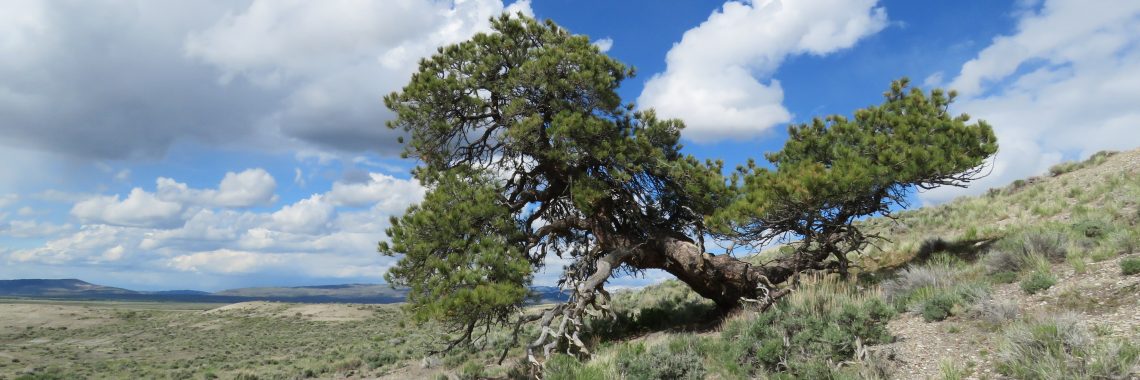The Black Hills of eastern Wyoming and western South Dakota have a history of serious abortion problems in cattle related to ponderosa pine (Pinus ponderosa). Abortion caused by ingestion of ponderosa pine needles is known to be a major economic problem in the Western U.S. and Western Canada, with losses as high as 50% in some herds. Pregnant cattle who consume ponderosa needles and buds are at risk of abortion and premature birth of calves. Weak calves and retained fetal membranes are often associated with these abortions.
The stage of gestation when pine needles are consumed influences the risk of aborting. Cattle in late gestation (3rd trimester) have been found to be more severely impacted. Additionally, cattle consuming pine needles at 250 days of gestation or later are at risk of calving weak claves who need immediate attention to survive.
Cattle tend to eat more pine needles during cold weather when grazing in ponderosa forested areas. Higher snow depth, reduced amounts of grazable forage, and cold ambient temperatures are contributing factors in consumption of ponderosa pine needles by grazing cattle. Therefore, as cattle enter late gestation and we continue to experience cold temperatures, it is important for producers to take measures to prevent consumption of pine needles.
High-protein diets may increase the risk of these losses. Also, note that losses cannot be decreased by straw, mineral, salt, or bentonite (chemical binder) supplementation. Therefore, the best prevention method is to avoid exposure to any source of pine needles, whether they are fresh, dry, or on fallen trees. This is a challenge for producers as fencing ponderosa pine areas off is not economically feasible and is time consuming. However, it is important to understand the issue and manage for it to avoid economical loss. One solution may be fencing some areas off only to mitigate the risk. Another solution is to plan ahead and avoid grazing these areas when possible. However, this practice may not be feasible for all producers.
Sources and Further Reading on Cattle Consuming Ponderosa:
- Cogswell, C.A., 1974. Pine needle (Pinus ponderosa) abortive factor and its biological determination. PhD Diss., South Dakota State Univ., Brookings, SD.
- Ford, S.P., 2001. Pine Needle Abortion – What We Know As Well As How To Predict/Prevent The Problem. Range Beef Cow Symposium. 81. https://digitalcommons.unl.edu/rangebeefcowsymp/81.
- James, L.F., et al. 1989. Pine needle abortion in cattle: a review and report of 1973-1984 research. Cornell Vet. 79:39-52.
- Lacey, J.R., James, L.F., Short, R.E., 1988. Ponderosa pine: Economic impact. In: L.F. Jamea, M.H. Ralphs, and D.B. Nielson (eds.) The Ecology and Economic Impact of Poisonous Plants on Livestock Production. pp. 95-118. Westview press, Boulder, CO.
- Pfister, J.A., Adams, D.C., 1993. Factors influencing pine needle consumption by grazing cattle during winter. J. Range Manage. 46, 394-398.
- Pfister, J.A., Panter, K.E., Garderner, D.A., 1998. Pine needle consumption by cattle during winter in South Dakota. J. Range Manage. 51, 551-556.
- Short, R.E., Grings, E.E., MacNeil, M.D., 2001. A model for determining risk of pine needle abortion in cattle calving at different times of the year. Proc. Western Sect. Amer. Soc. Anim. Sci. 52:174-176.





